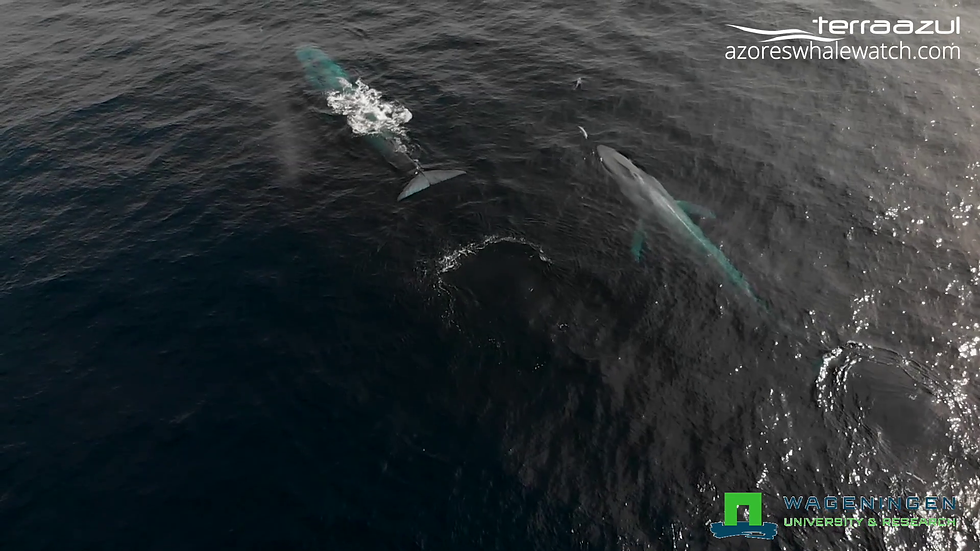Unique sightings
- Fadia Al Abbar
- Apr 9, 2022
- 4 min read
Updated: Jun 2, 2022
During our 2021 field-season we had some interesting sightings that we summarized here in this post. These sightings were out of the ordinary which is why we want to share them with you!
Marine debris
This is always an unfortunate sighting, but worth mentioning, the debris that we see during our trips. In summary, there were 15 occasions where marine debris pieces were observed in the drone footage between 23rd July – 18th August. It consisted of primarily plastic pieces but also fishing rope was observed, unidentified marine debris, and a plastic tube. The most marine debris recorded in one day was on 18th August when two patches of debris were observed and a group of dolphins swam directly underneath fishing rope (Figure below). One dolphin swam away from the main group to a piece of plastic which it interacted with by rubbing it against its dorsal fin, the plastic became dislodged from the fin and a section got caught on the tail fluke until the dolphin dislodged it by swimming faster and diving.

Fish and turtle sightings
Countless fish bait balls were recorded by the UAV video during focal follows of common dolphin groups. They occurred between 3rd August – 3rd September and most formed naturally without herding by dolphins or seabirds (gulls, Cory’s shearwater, as you can see in the photo below). Dolphin groups often ignored the smaller bait balls while traveling or resting but some opportunistically attempted to forage. Calve and juvenile animals regularly interacted with bait balls. On one occasion (17th August) a mother appeared to teach a calf how to herd and catch fish from a small bait ball at the surface. Single juvenile loggerhead turtles were seen on two occasions during the season. One on the 23rd July did not react to the dolphins passing it while traveling fast and remained at the surface. Another turtle on the 21st August dived when a common dolphin approached and tried to interact with it. See some of the foraging video's here, and here !
Mixed sighting of common dolphins and striped dolphins
Groups of animals sometimes form mixed groups involving different species. In marine mammals, this has hardly been documented and we don't really know much about it. We observed common dolphins mixing with striped dolphins, where both species had calves. Upon a group split due to disturbance, we found that the mother and calves from both species left with the striped dolphins, and that the adult common dolphins stayed with the vessel. An explanation for this behavior could be that the different species with slightly different niches can benefit from the formation of mixed groups. Not only when foraging, but also, for example, when protecting the calves. To read the full blog-post on this sigting, see blog here.
Common dolphins (yellow dots) mixed with striped dolphins (red dots
Curious about the hydrophone
During our entire field-work season we had a hydrophone from Seiche towed behind the boat, 25m long, an initiative by our acoustics coordinator Luana Clementino, and this was the reaction that the dolphins had. We matched the acoustics to the drone footage and this was the result: click here to watch the full video + sound that the dolphins were making in that exact moment!

Common dolphins bow-riding a blue whale
During one of our trips with Terra Azul Azores Whale Watch, we observed a special interaction when common dolphins were bow-riding a blue whale. This behaviour is similar to that of dolphins bow-riding a boat, where dolphins may make use of the wake or bow of the boat to ride the waves. It is unclear why dolphins pose this behaviour. In the case of the blue whale they may make use of their location to find small fish, or perhaps for pleasure and play. To see the full video, click here!
Sperm whales aligning into formation
On another occasion with Picos de Aventura we sighted sperm whales! This was an incredible sighting when we were on our way back to the harbour. There was a pod of 6 sperm whales of which one was a mother and calf pair. In the video you can see the calf underneath the sperm whale, drinking milk. To see the full 2 videos, click here and here!
Sowerby's Beaked whales filmed for the second time ever!?
On this very sunny day we were having lunch, when suddenly we saw some backs at the surface. There were three of them, very inconsistent surfacing, but more than beaked whales would usually do. We decided to launch the drone so that we could keep our distance, and there they were, 6 Sowerby's beaked whales!!!! The drone is an amazing tool to study such elusive species that would have definitely tried to avoid the boat if we tried to get much closer. With a safe altitude, the beaked whales stayed at the surface for about 20 minutes!!! See what we filmed here! As far as we know, this species does not get filmed very often and is the second time ever filmed by a drone!

Active Risso's dolphins
Why do we consider this sighting, of a resident species in the Azores, a special sighting? In Sao Miguel in particular, Risso's dolphins are not active very frequently. We usually see them surfacing calmly in small pods between 6-12 individuals. This pod was extremely active, socializing, turning, and leaping, which was a beautiful sight, especially from the drone! To see what we mean, check out the video here!

We hope you enjoyed our interesting and unique sightings summary of 2021. More to come in 2022!

Authors: Seán O'Callaghan & Fadia Al Abbar





留言